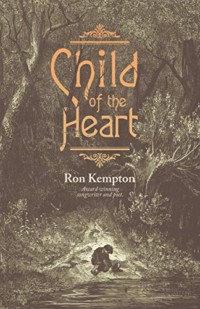Title: Child of the Heart
Author: Ron Kempton
Publisher: iUniverse
ISBN: 1532085044
Pages: 146
Genre: Fiction
Reviewed By: Dan MacIntosh
Pacific Book Review
 If you’re curious about, or have struggled with anxiety, depression, and other similar conditions, but you don’t have the desire or patience to sort through a dry clinical study on such deep psychological matters, Ron Kempton’s book Child of the Heart may offer up a suitable alternative. Instead of laying it all down in strictly clinical terms, Kempton utilizes personifications for these various conditions to express the way a troubled mind can sometimes behave, in hopes of helping readers better understand how their emotions function.
If you’re curious about, or have struggled with anxiety, depression, and other similar conditions, but you don’t have the desire or patience to sort through a dry clinical study on such deep psychological matters, Ron Kempton’s book Child of the Heart may offer up a suitable alternative. Instead of laying it all down in strictly clinical terms, Kempton utilizes personifications for these various conditions to express the way a troubled mind can sometimes behave, in hopes of helping readers better understand how their emotions function.
For Kempton, these conditions were personal. “During the year 2000, I spent most of the time in my room, scared to leave,” he confesses in the book’s introduction. “I was so afraid to leave the safety of my room I couldn’t function.” For Kempton, his condition was critical. A psychologist friend suggested he read a book called “The Anxiety Phobia Workbook” by Edmond J. Bourne. The book assigns readers to write a letter to their inner child, and for Kempton, this resulted in Child of the Heart.
It helped Kempton to personify the negative thoughts and feelings he was experiencing by transforming these emotions into story characters. For the reader, Kempton’s story can at times be bewildering. This is because the book can read like psychological analysis, and at other times more like a straight story. You may find yourself asking, ‘So, should I be reading this for its storyline, or for its analysis?’ With that said, though, Kempton has an obvious gift for storytelling. This search for his inner child is, indeed, an action-packed adventure.
Kempton also incorporates lines of poetry throughout his book. (Not surprisingly, of course, as Kempton is also an award-winning songwriter and a published poet). It’s not at all unusual for songwriters to use their skills for self-therapy. Although he doesn’t say anything about it in the introduction to his book, one suspects Kempton’s condition in 2000 also led to a few new song lyrics, as well. So, when the Bourne book suggested writing this letter, Kempton must have thought, ‘Well, writing is right up my alley!’ He’d probably already used his writing to address other life issues; however, this may have been the first time he’d intentionally written for the express purpose of self-healing.
How the readers responds to Child of the Heart might well depend a lot on just how much he/she is suffering. Hopefully, the character Rage, for instance, will read mostly like just another character in a work of fiction. For others, though, Rage will come off all too familiar as a feeling he/she has faced in the past, or worse, still facing.
Wisely, Kempton has also inserted humor into his story, namely via the twin brother characters of Wort and Mort. Although their roles are also serious – Wort is always afraid that any slight injury is life-threatening, while Mort is ever overly hopeless – their fears are sometimes so exaggerated, they come off as funny and add a welcome lighthearted element to the story.
At only 146 pages, Child of the Heart is a relatively short story. With all its various personifications, it may require multiple readings to fully take it all in. Ron Kempton’s effort is truly exemplary. If writing a letter to his inner child was some sort of school homework, he would have surely earned some extra credit. Yes, we all know how to write a straight letter; few of us, though, can transform a simple letter into a work of literary art. Kempton seems to have benefited greatly from this exercise, and hopes his self-examination also helps others. The human mind is a complicated realm, and Ron Kempton deserves kudos for exploring this complex area in such a creative way.


